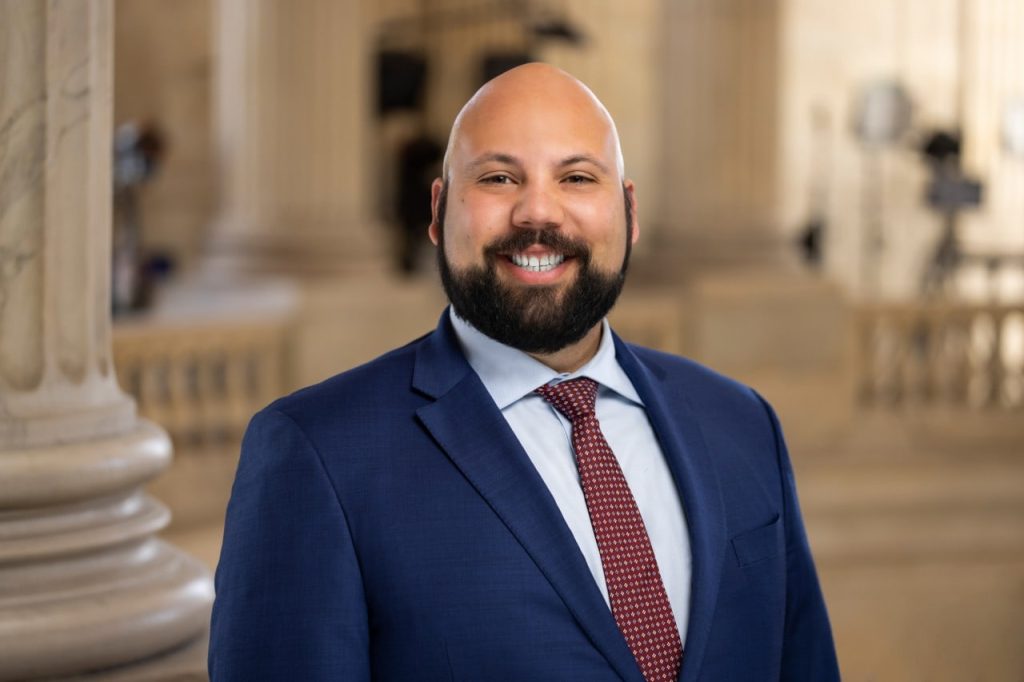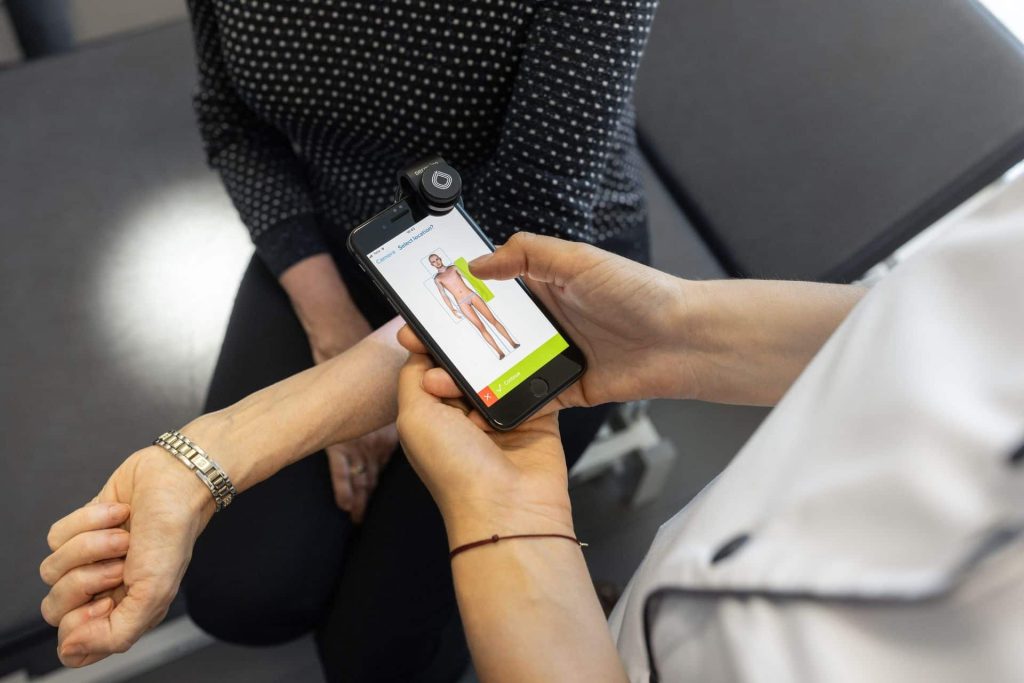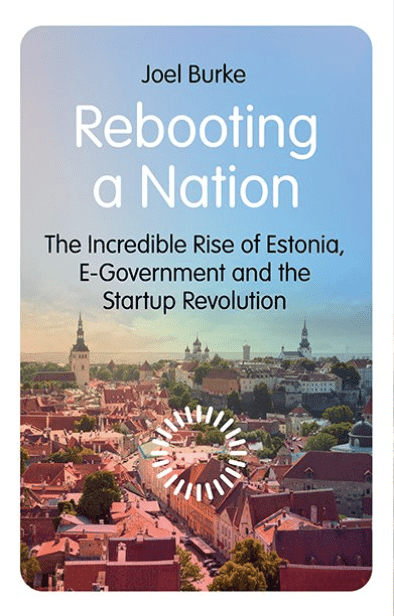5 things estonia taught me about building the future
Joel Burke, author, research fellow, and former Head of Business Development at Estonian e-Residency, shares his learnings from Estonia

Before coming to Estonia, I thought I understood a great deal about building the future. After all, I had started my career in tech in Silicon Valley, working as an early employee at a Y Combinator and Andreessen Horowitz-backed startup before making my way to Europe, and I assumed that was the pinnacle of innovation.
However, working in Estonia for the e-Residency program and seeing how a true startup country operated was an eye-opening experience that taught me about innovation at the scale of a nation state. Here are the five key lessons I learned from my time first leading business development for the e-Residency team and then writing Rebooting a Nation: The Incredible Rise of Estonia, E-Government, and the Startup Revolution, which examines how Estonia became a global tech hub and e-government leader in a single generation post re-independence.
Lesson #1: Mindset matters
One of the most surprising lessons from my time in Estonia was just how important the mindset was. In retrospect, it should have been more obvious. You can’t propel a country from economic stagnation after decades of brutal occupation to a world leader in e-government and tech without a prevailing mindset of grit, determination, and an overwhelming desire to become a country that will never be occupied again.
It was that mindset that helped Estonia get through tough periods, like economic shock therapy in the 90’s as the country shed its Soviet era legacy to become a market-driven economy, which meant inefficient factories closing, the removal of subsidies, and opening up the country to foreign investment and competition. While shock therapy caused short-term pain, it created a truly competitive and more entrepreneurial environment with a level playing field that enabled the next generation to build globally successful companies like Skype, Wise, and scores of other startups.
Entrepreneur and investor Sten Tamkivi summed it up nicely in an op-ed for The Atlantic about the country, saying “Still, Estonia is a start-up country–not just by life stage but by mindset. And this is what [the] United States, along with many other countries struggling to get the Internet, could learn from Estonia: the mindset.”
Critically important is making sure that political leadership has the same mindset when approaching their work. While it is entirely rational for most public servants to be risk-averse, accomplishing great feats like becoming a global leader in e-government and startups in a few short years post re-independence requires a mindset that prioritizes innovation, bold and decisive leadership, and a willingness to put one's career on the line to get things done.
This was a story that was repeated over and over, from the leadership of Prime Minister Laar to President Ilves and scores of others, who did things that at the time could be deeply unpopular (like making digital identity mandatory instead of optional before there was a clear value for the average person) but who had the tenacity and vision to do bold things that were necessary for the country’s long term success.
Lesson #2: The future is already here, it’s just not evenly distributed
In Estonia, filing taxes as an individual takes less than five minutes on average as tax returns are provided pre-filled (since the government has most of the data already), is free, and for 98% of people is done entirely online.
For many of us, such an innovation in government service delivery would be a massive change from the current way taxes are managed by governments, which often requires paying a third party like an accountant and takes hours and hours.
While it may seem small, these bureaucratic hurdles add up to a massive tax on our time and our productivity. According to a 2019 ProPublic investigation, Americans spent an estimated 1.7 billion hours and $31 billion on their taxes every year – money and time that could have been spent elsewhere.

While Estonians in the government and local digital government service providers like Digital Nation and Nortal, which helped to build the actual tech behind Estonia’s e-government, are quick to tell others not to try to create carbon copies of Estonian systems abroad, there is an important lesson for those seeking to build new technologies: see what works well elsewhere and adapt it for your own needs.
In fact, Estonia’s world-leading e-tax system was based on an earlier innovation by Denmark, which sent tax returns pre-filled via physical mail. Estonia simply took an existing analog process and digitized it, creating a massive public benefit in the process.
Lesson #3: Human resources trump natural resources
Estonia is many things, but it is not blessed with many natural resources. Unlike other countries, which could depend on oil or mineral wealth to help pay for government budgets and essential services, Estonia had no such luxury. Instead, it had to depend on the one real resource it had – the Estonian people. In this way, Estonia’s story is similar to Singapore’s; a small nation in a tough neighborhood which found a way to survive and thrive.
Critically for Estonia, early leaders were quick to grasp the importance of investing in the Estonian people and equipping them with the skills and knowledge necessary to be competitive in a rapidly changing world where technology is increasingly disrupting life and work. This has mostly manifested in the Estonian education system, which is a world leader with the 2022 PISA educational results putting Estonia at the top of the charts in Europe and eighth worldwide.
However, Estonia has excelled not just in basic education but in teaching the skills of the future. Starting in the mid ‘90s, forward-thinking government leaders, namely Toomas Hendrik Ilves (who would later become President), hatched a plan to help the country leapfrog from the old economy and system of education to the future by connecting every school in the country to the internet and providing training programs so the next generation would be tech-literate.
Please to watch this video.
The plan, which became the Tiger Leap, and accomplished its primary objective of connecting every school to the web by 1999, would become a model that birthed spin-offs in things like robotics education. And the program’s impact has been profound. Today, it is difficult to find a founder of one of Estonia’s numerous tech companies who didn’t get at least some exposure to the web through the Tiger Leap program.
The country has continued to invest in educating the next generation in the skills of the future, with the country partnering with OpenAI to bring a specialized version of ChatGPT to high school students as part of the AI Leap 2025 program and drone training as part of the national defense curriculum, made necessary by Russia’s invasion of Ukraine.
Legendary statesman Henry Kissinger said of Singapore’s founding father Lee Kuan Yew that he had identified the importance of creating a skilled workforce for achieving his dream of a successful, sovereign Singapore despite the nation's lack of natural resources, and that: “his vision was of a state that would not simply survive but prevail by excelling. Superior intelligence, discipline, and ingenuity would substitute for resources.” Estonia has followed a similar vision, but in addition, the aforementioned traits have made entrepreneurship a core tenet of its education and competitive philosophy.
Lesson #4: Necessity is the mother of invention
Unsurprisingly, after decades of Soviet economic mismanagement, Estonia was not a wealthy country when it won back its independence. The government was faced with difficult challenges of how to deliver quality public services to citizens while balancing the budget and helping the economy get back on its feet. No easy task in any country, but especially difficult in a nation double the physical size of New Jersey with one-seventh the population.
However, not only has the country succeeded in delivering high-quality government services, but has become a globally recognized leader in e-government solutions with basically every interaction with the government accessible online (even marriage and divorce have been digitalized).
Somewhat counterintuitively, the lack of resources led to more innovation in the country, with a willingness to experiment and try things out rather than going the safe route or papering over or throwing money at problems hoping they go away.
When recalling Estonia’s development, Sten Tamkivi said that “The other factor that I think we made really good use of was the lack of resources. Which again sounds like a deficiency at first, but it’s one thing that makes you think creatively. If you’re a western government ministry and you need to build a bookkeeping system, then IBM and Oracle and these guys come to you and say it’s going to cost twenty-million dollars… In Estonia, sorry, haven’t got that so let’s put two guys in a room and see what they come up with.”
Necessity leading to creativity and innovation is well understood in the startup sector, and venture capitalist Steve Jurvetson has also remarked that some of the country’s most notable startups like Skype benefited from resource deprivation as well, forcing the company to be more innovative and resourceful than bigger and better capitalized companies like Microsoft (which would eventually acquire Skype).
Lesson #5: Legacy comes for us all
There is little doubt that Estonia’s modern legacy is built on a bedrock of an exceptional vision and mindset as well as a relentless execution by public servants, entrepreneurs, and the general public to build a better future, along with a little good timing.
Because Estonia regained its independence at the dawn of the modern web, it was able to capitalize on technology trends that allowed it to become a world leader in e-government services. If it had achieved independence twenty years earlier, building government services online from the start simply wouldn’t have been possible because the technology wasn’t there yet!
However, because many of the systems Estonia built which form the bedrock of its e-state were developed in the late ‘90s and early 2000s, they were optimized for the desktop era. Today, many of us are attached to our phones every waking moment and almost everything we do is through a mobile device. That means for many, their default way of accessing many government services is through their phone, not their computer.

This has created an issue of “legacy” software for the Estonian government, which has had to invest in building new mobile-optimized services for the Estonian people, while still maintaining their initial, now legacy systems (which are still widely used).
On the other hand, Ukraine, which started their government service digitalization drive in earnest with President Zelenskyy’s vision of a state in a smartphone, benefited from focusing on that one modality because it was clear by then that mobile devices would be the dominant interface for most users. This has allowed Ukraine to deliver the Diia application in a way that is more accessible and intuitive to most people, and now Ukraine is sharing its lessons with Estonia and the rest of the world.
This is one of the most important lessons in building the future – everything will eventually become outdated. Building the future requires constant efforts towards innovation, hard choices, and a willingness to disrupt oneself. For those building the future today, whether in a startup or in government, it is critical to think of the current and coming technologies like artificial intelligence or new interfaces like augmented reality glasses that will affect both what we are able to do online and how we access it.
Former Prime Minister Kaja Kallas:
“When I speak to people outside Estonia, then I’m often asked what is behind our digital and e-governance success. And I always explain, it’s about mindset. We see e-governance not just as a question of building technology, e-governance is also a question of building democracy.”
There are undoubtedly countless other lessons one can draw from Estonia’s incredible journey over the last three decades in how to build the future, but these five are the ones that have had the deepest effect on my mentality. However, there is one other important lesson to learn about building the future, especially when times are hard, from the esteemed Estonian statesman and former President, Lennart Meri: “The situation may be shit, but it’s our fertiliser for the future.”

About the author
Joel Burke is the author of Rebooting a Nation: The Incredible Rise of Estonia, E-Government, and the Startup Revolution and a research fellow at fp21, a think tank focused on transforming the process and institutions of U.S. foreign policy using evidence. Previously, Joel was an AI fellow in the office of Senator Mike Rounds and served as Head of Business Development for the Republic of Estonia’s e-Residency program.
More from e-Residency
- Sign up for our newsletter
- Watch fresh video content - subscribe to our Youtube channel
- Meet our team and e-residents - register for our next Live Q&A